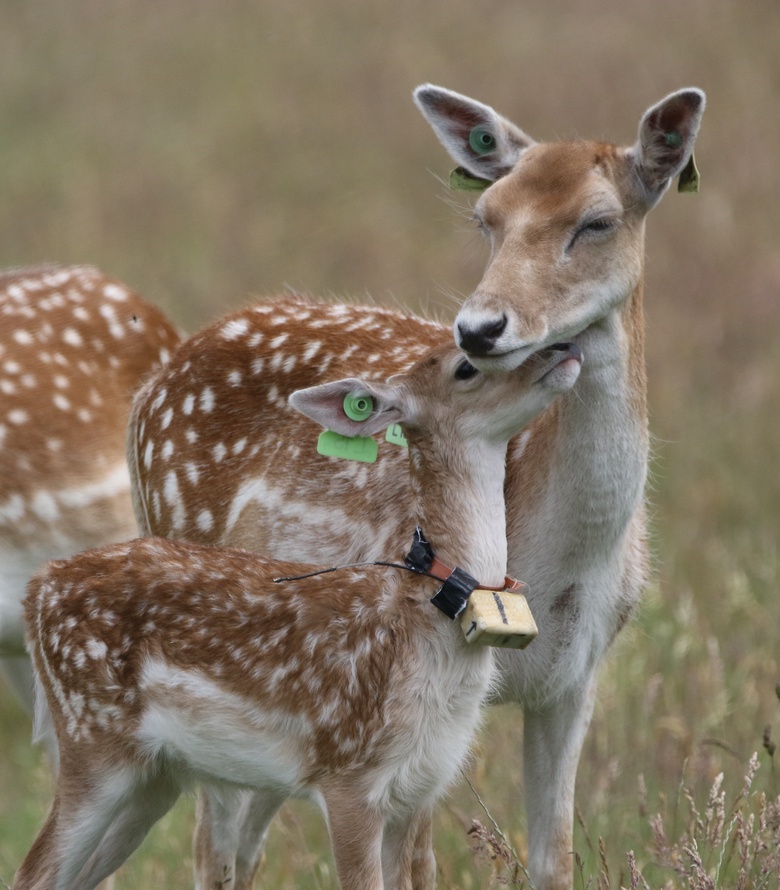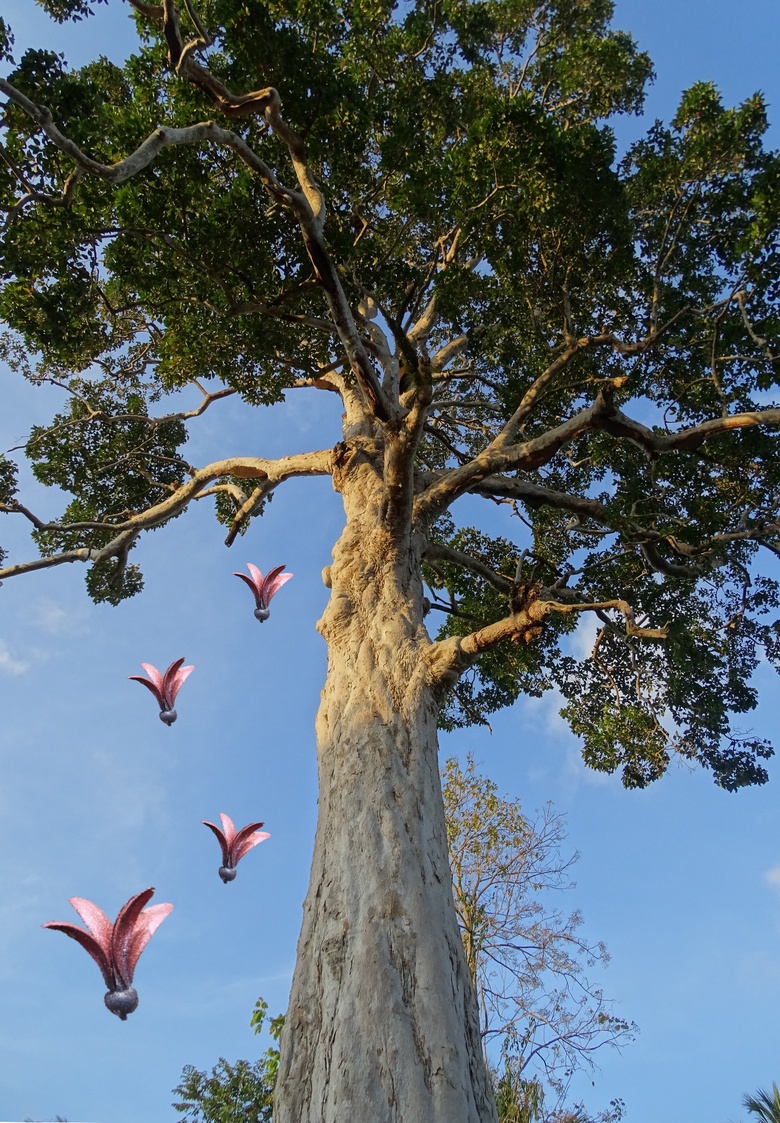The winners of Images of Research Competition 2022:
Judges’ Winners:
- Layered time by Ashleigh Black
- Visits to the grocer's by Cristina Rueda Uribe
Highly commended:
- The many arms of grandma by Mary Cane
- Removed from display by Sarah N. Hiepler
People's Choice Winner:
Life and Death in fragments by Elisabeth Chaumont-Sturtevan
View all the 2022 entries below
- Layered Time, Judges' Winner
-

School of Language, Literature, Music and Visual Culture
The urban city is a living stage, a theatre of social interaction. Although George Washington Wilson (1823-1893) achieved recognition for his photography, his work has not been the focus of significant scholarship. As a way of looking at his images of cities, I have integrated Wilson’s original images with my own. By doing so, the past and the present are fused as one continuous frame of layered time. My research demonstrates the relationship between time and the permanence of urban settings posing questions about the cultural importance of power of place and how we visually choose to represent it.
- Visits to the grocer's, Judges' Winner
-
Cristina Rueda Uribe
School of Biological Sciences
While this female hummingbird feeds on nectar, the plant is playing a trick: pollen will hitch a ride on the bird's forehead to fertilize other plants as the hummingbird searches for more nectar. What other flowers will the hummingbird visit? How far does she have to travel to find food? Will it be available all year? We are interested in studying the seasonal movements of hummingbirds between habitats because they may face a challenge when crossing transformed landscapes. Finding management strategies that facilitate their visits to the grocer's is key for their survival and role in plant reproduction.

- The many arms of grandma, Highly Commended
-
Mary Cane
School of Language, Literature, Music and Visual Culture
The scope of my ethnographic research is to look at the lived experience of grandmothers, who like myself have geographically separated grandchildren. For distant grandmothers, passing on family folklore has changed from embodied learning – visual and bodily behaviours enabled by sharing the same space – to short physical visits supplemented with digital communication.
A good sense of personal identity contributes to mental resilience in young adults, so grandmother connection to family has profound implications.
Behind the quiet exterior of grandmother and researcher you will see the same long tentacles, actively reaching out to explore shared worlds of concern, attachment, and understanding.

- Removed from Display, Highly Commended
-
Sarah Hiepler
School of Social Sciences
Museums in the UK are rethinking their collection and care policies around human remains, questioning whose remains are appropriate for public display. Many institutions, including the Wellcome Collection and Pitt Rivers, are taking human remains off of public display, leaving their cases evocatively empty. This trend is important to examine due to the fact that museums are one of the only public places in the UK where human remains can be viewed. What does this type of display say about death’s place in society? Is this an effective way for museums to highlight their attempts to decolonize their spaces?
(Image taken by Sarah Hiepler in Wellcome Collection's 'Medicine Man' Gallery, December 2021)

- Life and Death in fragments, People's Choice Winner
-
Elisabeth Chaumont-Sturtevant
School of Geosciences
In Scotland, 3500 years ago, a pyre was lit and final goodbyes were whispered. Today, the fire has long died out and only ashes remain. Due to the destructive nature of cremation practice, such burials have not captured our imagination in contrast to how other archaeological burials have.
How can these lost communities be better brought back to life?
A better understanding of these archaeological remains (bones, charcoal, beads, flints, pottery) offers us a glimpse of the past with the dead helping us interpret who these people were and how they lived.

- A Cast of the Past
-
Amy Lally
QUADRAT DTP
Glaciers have plumbing systems that evacuate meltwater through the system. This meltwater deposits sediment in tunnels under the ice, forming snake-like mounds of sand and gravel - called eskers. Eskers, like this one in front of Breiðamerkurjökull in Iceland, tell us a story about the drainage system inside and under the ice. Studying these features can improve our understanding of how glaciers evolve to accommodate to changes in meltwater supply, which is set to increase in response to human induced climate change.
- Unravelling the mysteries of kelp
-
Anton Neil Kuech
QUADRAT DTP - School of Biological Sciences
Home is where the light shines through our kelp forest by the coastline. Carbon dioxide is absorbed and as the loyal basis of the ocean’s food chain, a productive habitat is created. But oceans are unpredictable. A storm surge detaches us from the rock and we are swept out to the open ocean. Part of us becomes separated and slowly starts sinking into the abyss of the deep sea where the carbon will remain locked away for centuries. With the currents now changing direction we start drifting back home, only this time our final stop is on the sandy shore.
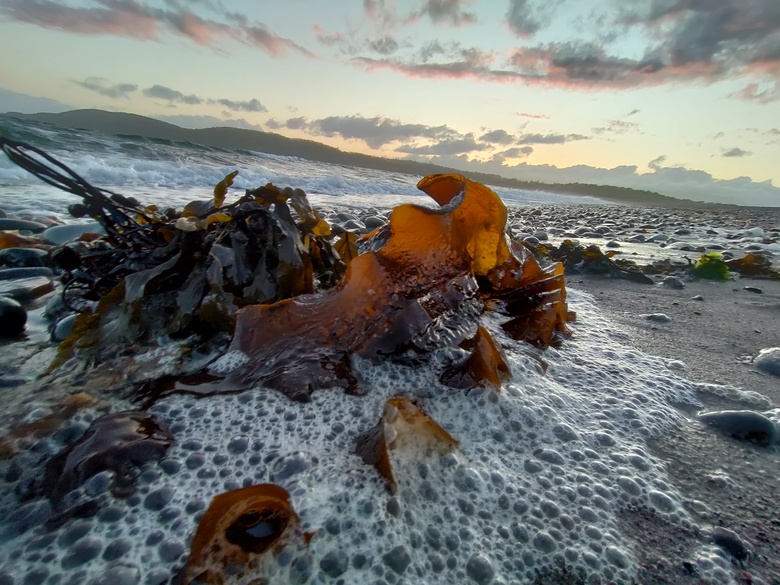
- A Heart in the Right Place
-
Brian Keeley
School of language, Literature, Music and Visual Culture
"My heart has no nerve connections to my brain, and in the picture, you can see the line where it has been stitched onto my main artery. I am still the same person as before my transplant. I didn’t lose my ‘bodily integrity’ when my old heart was thrown in the bin. Nor am I a ‘hybrid’ with an ambiguous identity, as those who perpetuate sensationalist transplant narratives might have you believe".
Image: from the film ‘Aware’ (2022), by Brian & Bibo Keeley. Visual artist Brian’s PhD research focuses on non-experiential (mis)representations of heart transplantation in visual art and culture.
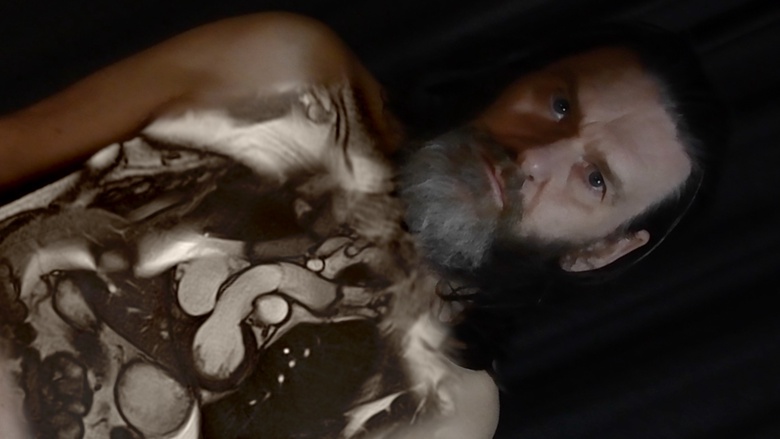
- Fair Trickit! (adj.) pleased, happy, delighted
-
Claire Needler
Language, Literature, Music and Visual Culture
Fair Trickit! (adj.) pleased, happy, delighted
Scots is one of three indigenous languages in Scotland, alongside English and Gaelic, and is taught in an increasing number of schools. As part of a school-university research project exploring contemporary use of Scots, I asked pupils and teachers how they felt about Scots. In collaboration with an artist, we used interview data, photographs, and objects to make an exhibition to raise awareness of Scots as a language, and to promote positive attitudinal change. This portrait illustrates how language teaching, participatory arts, and academic research were combined to encourage participants to feel ‘fair trickit!’

- Remote? Not Remotely.
-
Kirsten Gow
School of Geosciences
The typical images we see of Scotland’s offshore islands are of sweeping beaches, majestic mountains and empty landscapes, but these places are also home to living, breathing communities for whom the islands are the central part of everyday life. Our islands are richly diverse: home to ancient history, cutting edge renewable technology, living traditions, and global brands, but many communities are also at risk from falling population levels.
Exploring ways to tackle depopulation is crucial if we want to continue to benefit from our islands’ cultural and natural assets, locally and nationally, and retain our unique and vibrant island communities.
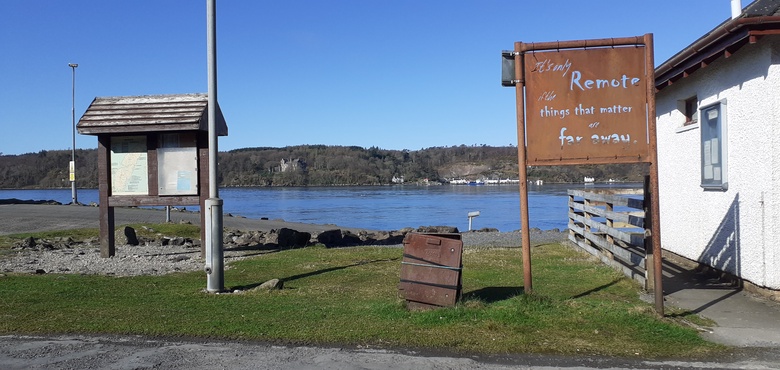
- Is a mothers love enough?
-
Connie Baker-Arney
QUADRAT DTP
Stress during pregnancy (Maternal Stress) can have severe consequences upon mothers and their developing offspring reducing their health and wellbeing. High stress takes a huge toll on pregnant mothers impacting their ability to provide the care their newborns require to survive. Maternal stress is yet to be studied in a large wild mammal like the fallow deer and it begs the question at a time when human-wildlife conflict is rife and climate change brings extreme weather. Are these animals suffering from the consequences of maternal stress too? And is the maternal bond strong enough to counteract these effects?
- Rigs to Reefs
-
Edward Sibley
School of Biological Sciences
A shoal of longfin batfish (Platax teira) patrol the waters around an oil rig off Thailand. The offshore expansion of the oil and gas industry in the 1950s resulted in the deployment of thousands of rigs across the oceans. Rigs provide complex artificial habitat from surface to seabed, aggregating diverse fish communities. With many rigs reaching the end of their operational lives, debate rages as to whether we should remove them, or keep them in place to preserve associated marine life. My research aims to inform this debate by profiling the distribution of fishes living on rigs.

- Change Made
-
Emma Berry
Schoool of Medicine, Medical Sciences and Nutrition
Inspired by Care Opinion’s “change made” icon, the image represents the ongoing process of healthcare improvement. Care Opinion invites people to share healthcare experiences online and allows NHS staff to respond. My research looks at how online feedback, like from Care Opinion, is used to improve care in NHS Scotland. Although care is at the heart and centre of healthcare processes, other things (positive or negative) can influence how care is improved or changed. The words within the image are reoccurring throughout my research to date. Understanding these factors can allow for learning from feedback and encourage a “change made”.
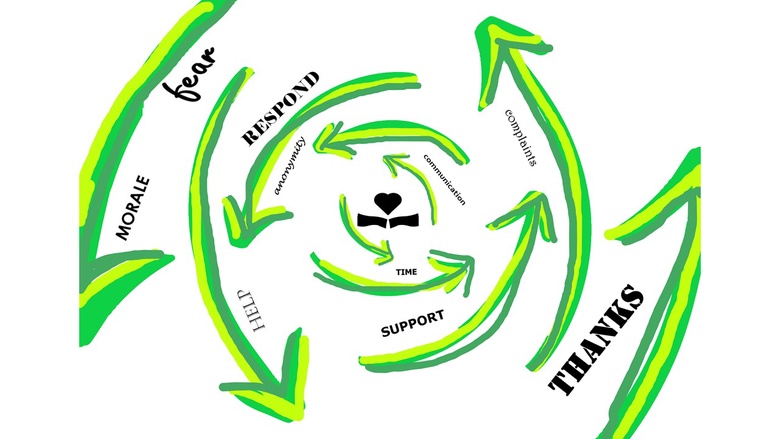
- Paradisal rural places, or a masquerade?
-
Emma Hayes
QUADRAT DTP
Clean water is essential for life, we all use it daily, but poor water quality is a persistent problem affecting all global societies and economies, particularly from agricultural sources. A small idyllic farm might look innocent, but don’t be fooled by the small stuff! These farms can hide some significant nutrient and sediment sources that are entering nearby rivers. Using sub-field scale research with modelling techniques, remote sensing applications, and field sampling of soils, riverbanks and water sources have shown that water quality improvement schemes need to focus on the unassuming small-scale sources to have tangible impacts.

- Waste-to-Energy Alternative:
-
Emmanuel M. Dickson
School of Biological Sciences
Municipal solid waste can be a great asset if used appropriately for energy generation. Waste treatment technology of anaerobic digestion will produce two major products of biogas for electricity and heat generation and digestate which is used as organic fertilizer for agricultural purposes. The biogas and digestate have other various environmental benefits if well developed. Potential other uses include horticulture products, animal bedding and sustainable feedstock to name just a few.
- Life surrounded by the water
-
Marcus Craigie
School of Geosciences
This image was taken on a trip to my homeland, Orkney. The photograph evokes feelings of stillness, remoteness and isolation, however this interpretation could be seen as stereotyping island characteristics, rather than a true reality of island life. My research focuses on island revivals and repopulating the Scottish Isles. The importance of viable populations is crucial, as declining population numbers can create unsustainable environments and lower community resilience. While I take my first steps in my PhD journey, I hope to be able to help address the global challenges of repopulating the isles and reframing the interpretations of island life.

- Understanding arthritis: a ‘joint’ effort
-
Rebecca Symons
School of Medicine, Medical Sciences and Nutrition
In arthritis research, we use staining and microscopy techniques to help us understand the changes that take place in joints during disease. We found a key protein (red), is increased during arthritis in cells that form the joint lining (green), and is involved in driving the disease. However, the hidden story behind this single image is of decades of technical and conceptual progress driven by a worldwide community of scientists, united by a common goal to better understand and alleviate suffering. It serves as a reminder that no scientific advancement is achieved in isolation.
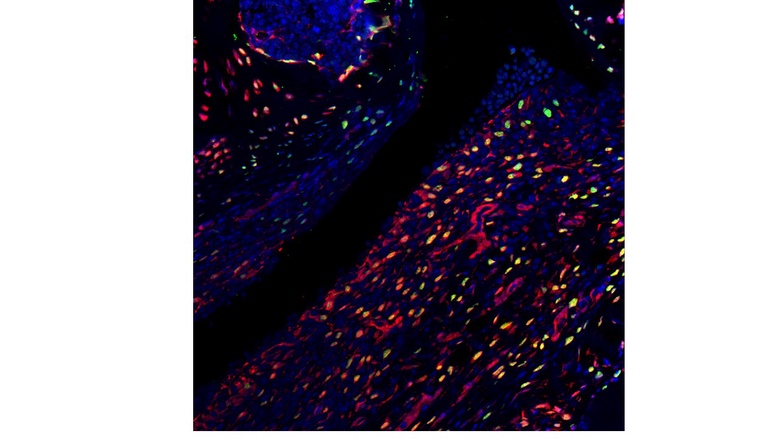
- Carbon Capture
-
Rukayat Oyiza Salawu
School of Engineering
Are we tired of hearing about the consequences of emitted gases from chemical industries on our precious Earth? What is the most common gas? Carbon? Absolutely right. It has been causing a strain on the environment with a surge of chemical industries, the world hasn't been the same with environmental pollution, ozone layer depletion etc. Like other greenhouse gases, have you thought of its benefits when properly captured and utilized in several sectors, e.g. energy sector, cement and petroleum industries? Now, carbon capture is a method to explore and convert the environmental enemy to a useful friend.
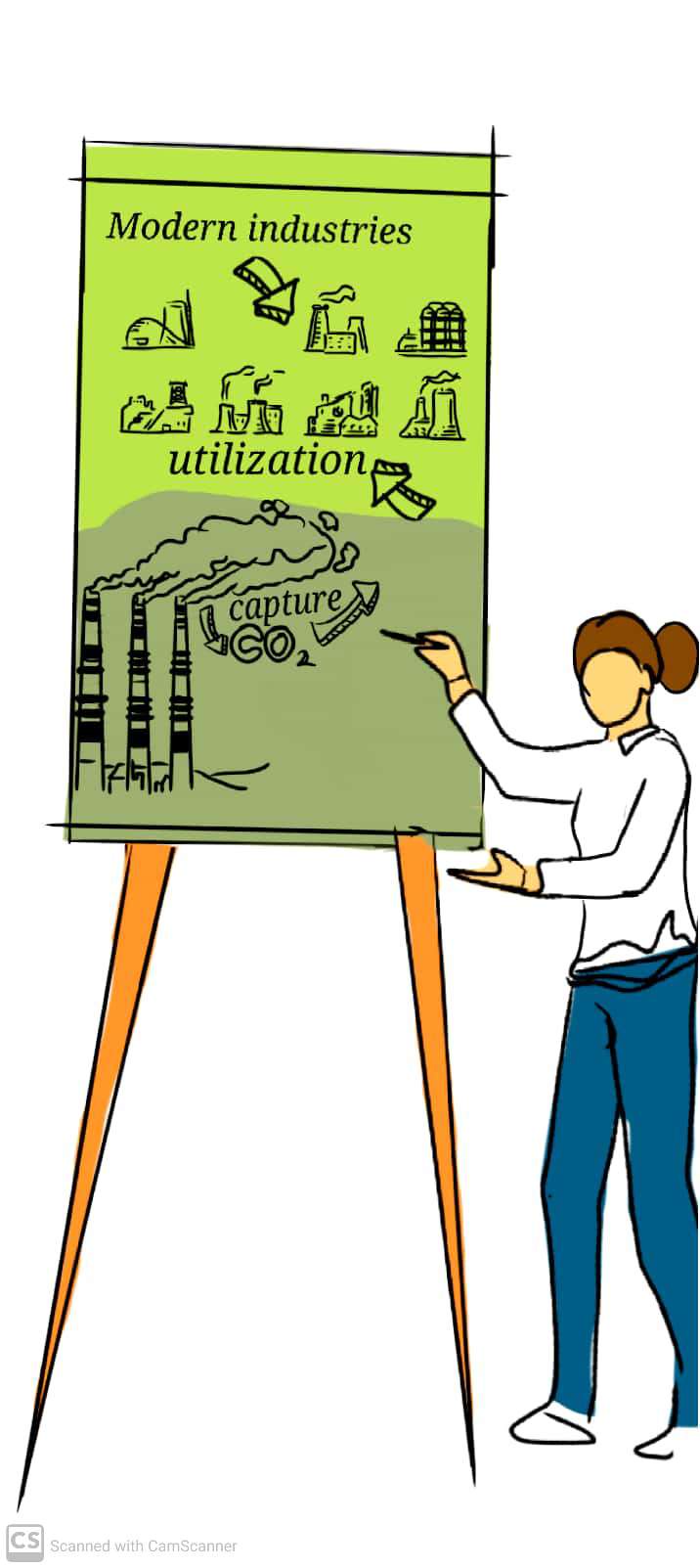
- Fly to survive
-
Tania Kanchanarak
School of Biological Science
Majestic dipterocarp trees, some with heights more than 60m, dominate the forests of Southeast Asia. They provide a myriad of ecosystem services as well as valuable timber. But their tiny winged seeds, looking like helicopters, can “fly” for only short distances. This is important because forest loss has increased the isolation of trees, risking their reproduction. Our research predicts how dipterocarp species with different pollinators and seed dispersal traits would survive in an extremely disturbed habitat. What are the traits that enhance resilience in changing landscapes?
- Voice message of Parkinson’s
-
Yan Li
School of medicine, Medical Sciences and Nutrition
When I was young,
I can climb the mountain see the sea.
Now the nurse phones me every year,
Apple table penny.
Afraid one day I will lose time,
Don’t know the season and where I am.
What is my risk of ending in nursing home?
No one can answer no one knows.
What are my risk factors?
No one can answer no one knows.
My leg will freeze my memory will lose.
But I still have hope,
One day someone will know,
Will leave time for me to prepare.
To seek hope again.



